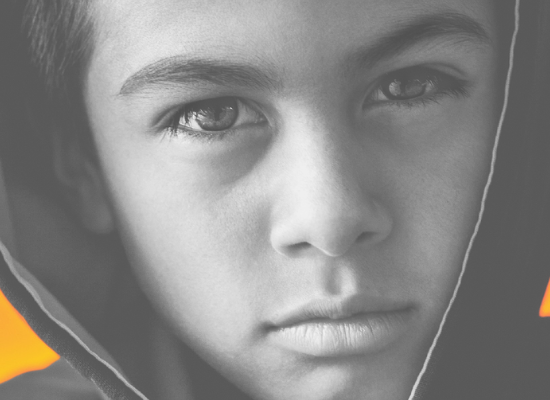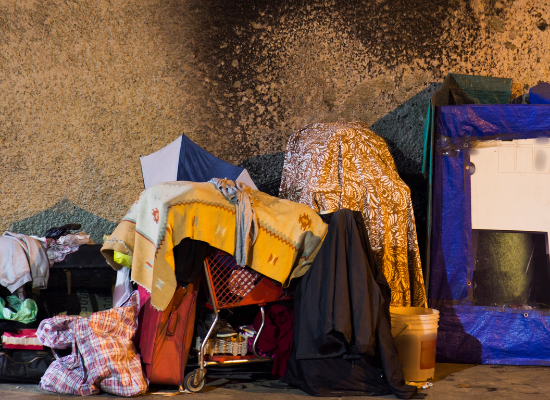
Stephanie Hepburn is a writer in New Orleans. She is the editor in chief of #CrisisTalk. You can reach her at .
In 2019, Ron Bruno, a retired Utah police officer and executive director at Crisis Intervention Team (CIT) International, told #CrisisTalk that “mental healthcare shouldn’t come in a police car.” More than two years later, he says the seemingly obvious statement remains controversial, especially in places that use law enforcement as their primary behavioral health crisis responder. That includes communities that have invested in embedded co-response, where police departments have dedicated personnel that partner with clinicians to respond to mental health and substance use crises. “They’re often married to that model and not open to other interventions,” he says.
However, while these communities dig in their heels, all around them, there’s been a much-needed, long-awaited cultural shift in awareness—that, in most cases, law enforcement isn’t the right crisis response for a person in a behavioral health emergency. “It fell to us, but we aren’t the best solution or help to a person in an escalated state,” Bruno told us in 2019. Resistance to change is layered, but often, it’s at least partly because those counties don’t have sufficient mental health or substance use staff and programming to take over for law enforcement. “So law enforcement is still left holding the bag,” he says. Many police departments understand the risks of solely sending out police officers, so their answer is to hire department clinicians and co-respond with them.
While certainly better than a police-only response, the embedded co-responder model is costly, and it’s not as beneficial as other approaches like mobile crisis services. Police departments with embedded co-response either have dedicated officers waiting for mental health crisis calls or clinicians riding along with officers responding to unrelated calls. “The problem,” notes Bruno, “is that the same amount of dollars are going toward building multiple programs and systems, and this type of co-response isn’t the most effective or cost-efficient approach.”
Bruno also believes diversion should happen long beforehand by people directly contacting 988—the three-digit number for mental health, substance use, and suicide crises—and at the 911 call center. (In many communities, 211 is the number to call if someone is experiencing quality-of-life challenges.) “911 is our gateway to the criminal justice system,” he says, “so it’s critical that diversion to the behavioral health system happens as early as possible.”
Rapid deflection from 911 means that call takers must be trained to triage behavioral health calls and determine whether to send law enforcement. “We want to build crisis response systems that are the least intrusive in the life of a person who has mental health issues or who enters a crisis,” says Bruno. Places like Harris County, Austin, Los Angeles County, Tucson, and Virginia have developed call assessment matrixes, helping call takers divert most behavioral health calls and provide standardization. (Virginia is the first state to develop a statewide 911 call matrix.)
If a call taker perceives a call as high risk—for example, the person has or is believed to have a weapon or an object that could potentially be used as a weapon—that’s when a 911 call center should dispatch law enforcement. “This is where CIT officers come in,” says Bruno. The officers are self-selected and have been trained and screened for their skillset and disposition to be able to handle behavioral health emergencies that reach that level of danger. “We can send out CIT officers from patrol to deescalate these crises on their own,” he says. “Or better yet, we could co-dispatch with a mobile crisis team.”
Bruno points out that while police departments should have a cadre of CIT-trained officers, not every officer in a department needs to be CIT-trained. These specialty officers are taught how to work with behavioral health crisis services and vice versa. “As with embedded co-response teams, the two know how to work together,” he says. The difference is that, in most cases, when a person needs an in-person response, “the mobile crisis team can usually handle the situation without ever needing law enforcement to even show up.”
The ability to have co-response is critical, notes Bruno, but it’s not needed on every call. For example, co-dispatch of a mobile crisis team and CIT-trained officers allows both resources to be used jointly when required but otherwise function independently. “That way, mental health assets aren’t riding with a cop all day,” he says, “or a cop isn’t standing around while a clinician provides mental health support.”
Despite the collaborative focus of the CIT program, many communities just implement the training element. The program, co-developed by now-retired Memphis Police Maj. Sam Cochran, is designed to reduce the role of law enforcement in behavioral health response through cross-system, cross-sectoral partnership. Maj. Cochran told #CrisisTalk in April 2020 that robust community partnership can help remove systemic issues and barriers to people with mental health challenges getting the help they need. Like Bruno, Maj. Cochran states communities must have a behavioral health crisis system that can provide an in-person response when needed. “Otherwise, the person is going to end up in the county jail or emergency room because there aren’t other options,” he said.
“You want to separate the person in crisis from law enforcement as quickly as possible because the longer a person is attached to the criminal justice process, the more likely that person is going to end up in the criminal justice system.”
Interactions with law enforcement not only can result in arrest or avoidable hospitalization, but they can also be lethal or result in trauma. According to April 2022 data from the Washington Post’s police shooting database, of people killed in the United States by a police officer in the line of duty since January 1, 2015, 22% were Black, 15% were Hispanic, and 22% were identified as having a mental illness.
In February, trauma expert Tonja Myles shared with #CrisisTalk the disparate experience she had with two police officers when she was in a suicidal crisis: one was CIT-trained, and the other wasn’t. She says the officer who wasn’t CIT-trained treated her as if she was a criminal, not a person in psychiatric distress. The interaction caused her to experience more distress, and the interaction quickly escalated. Fortunately, the CIT-trained officer intervened. “He said, ‘Look, Ms. Myles, people care about you; they’re worried. I need to take you to the hospital, but I’m not going to put you in the back of the police car.’” Instead, Myles’ nephew drove her to the emergency room, and the officer followed.
Across the nation, some communities are turning to the Sequential Intercept Model, Stepping Up, and their CIT steering committees to identify how people with behavioral health and/or quality-of-life challenges come into contact and move through the criminal justice system. However, notes Bruno, places can only turn to the latter if they understand the intent of the CIT program and have developed cross-sectoral, cross-system partnerships.
There’s been growing community interest in CIT training, including CIT support training for 911, because of the Covid pandemic and corresponding challenges, increased focus on racial disparities, and 988. “We train 911 call takers on how to recognize behavioral health calls, start the de-escalation process, and triage the call,” he says. The training also addresses the information call takers need to gather, when law enforcement must be dispatched, and how to either co-dispatch mobile crisis services or do a warm handoff to a crisis service. “We also have communities reaching out to us about how to develop mobile crisis teams that are independent of law enforcement.”
Transitioning to a non-law enforcement response requires funding, workforce development, and bridging the gap between the two crisis systems. More than that, notes Bruno, it means true partnership and connectivity between 911, law enforcement, and the behavioral health crisis system. “At that point, law enforcement can start to breathe easier and fall into the role of support,” he says, “and only respond to situations that meet a high level of danger or where there’s a criminal concern.”









